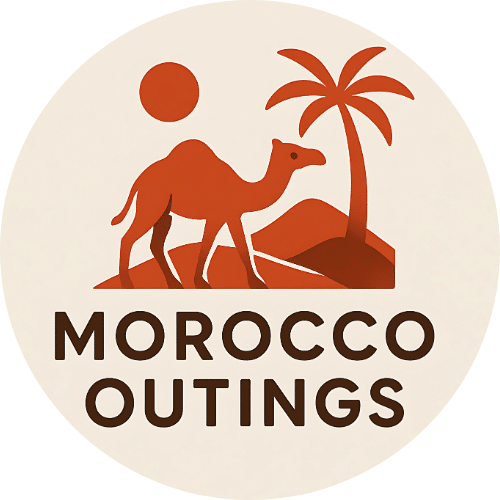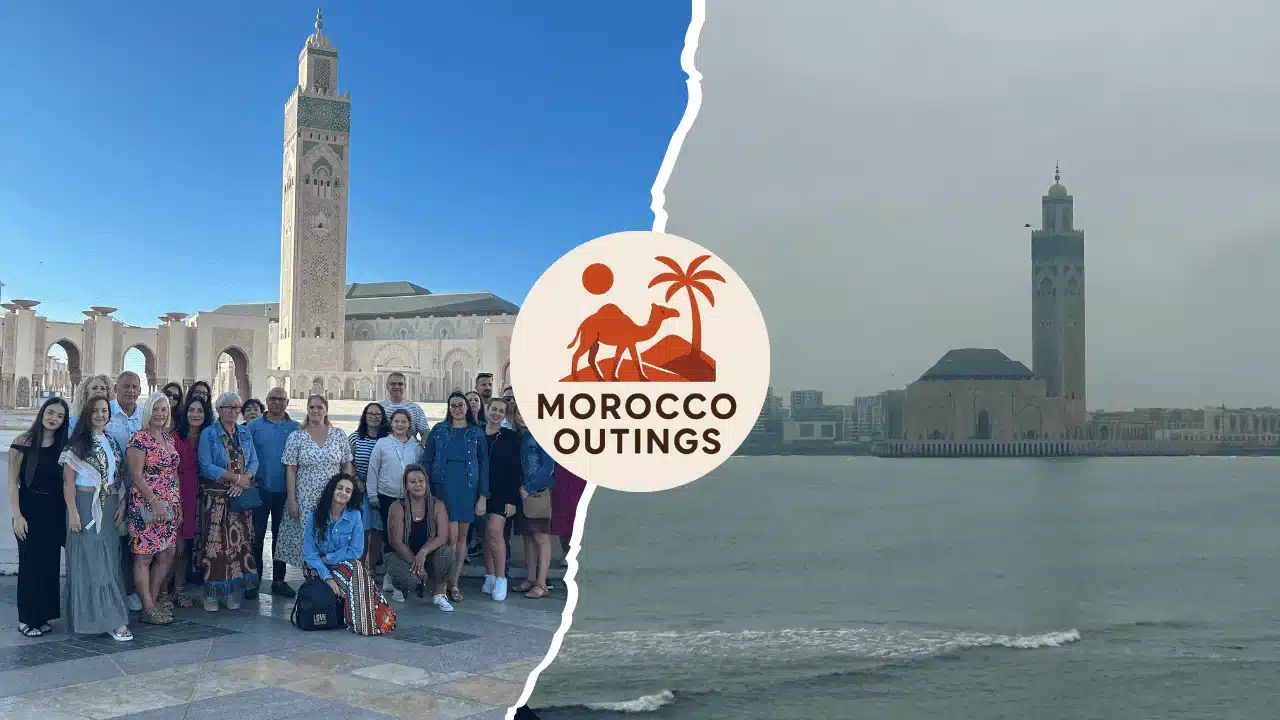How Many Days Do You Need to Tour Casablanca – Tourist Guide
Casablanca, Morocco’s largest city and its beating economic heart, is a destination where modern cosmopolitan life meets rich traditions and historical layers. Unlike many Moroccan cities known primarily for their ancient medinas, Casablanca presents itself as a vibrant blend of Art Deco architecture, wide boulevards, bustling souks, seaside promenades, and cultural treasures. Whether you’re drawn to its grand mosque, colonial heritage, or thriving food and nightlife scene, the number of days you’ll need to explore Casablanca depends on your travel style, interests, and whether you plan to take nearby excursions.
This guide will help you plan your ideal visit, breaking down what you can experience in Casablanca depending on whether you’re here for a short stopover or a week-long immersion.
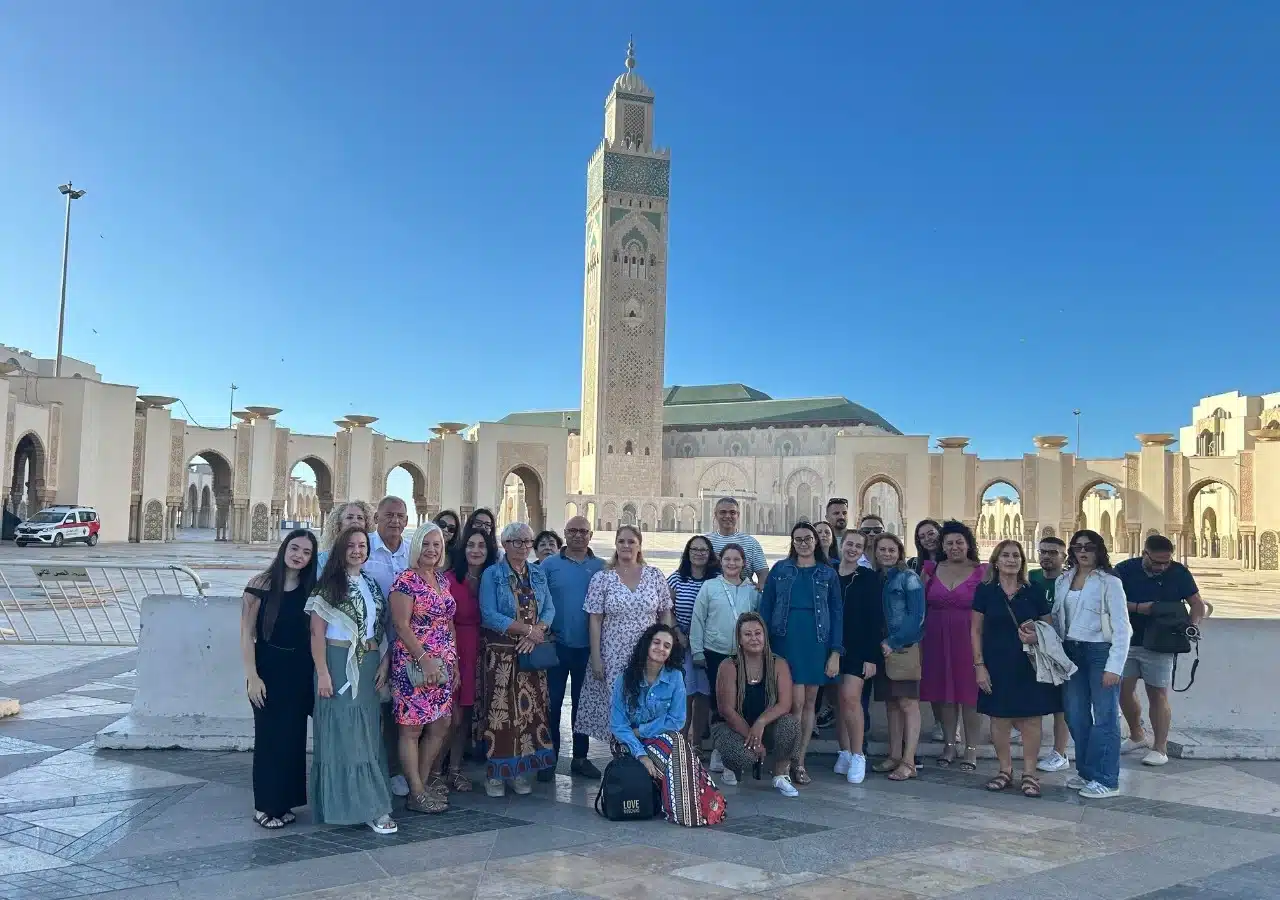
Perfect Duration for Touring Casablanca City
Day 1: Introduction to Casablanca’s Icons
Morning: Hassan II Mosque
Start your Casablanca journey with the city’s most famous landmark: the Hassan II Mosque. Perched on the Atlantic coast, this architectural marvel is one of the largest mosques in the world. With its 210-meter-high minaret, intricate mosaics, and breathtaking oceanfront views, it is a symbol of Morocco’s craftsmanship and spirituality. A guided tour is highly recommended to appreciate its scale, artistry, and cultural significance.
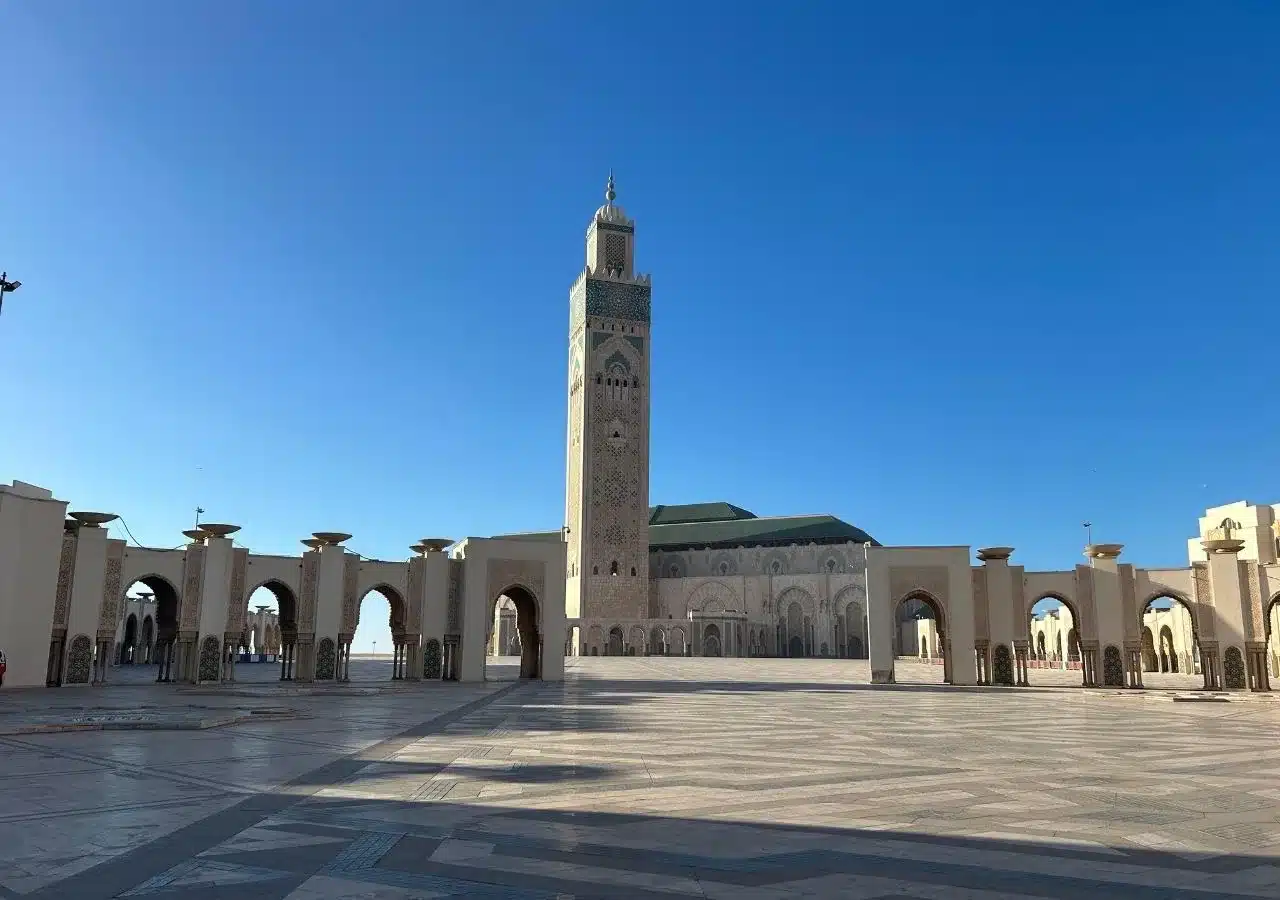
Afternoon: The Corniche
After your mosque visit, head to Ain Diab Corniche, Casablanca’s lively seaside promenade. Stroll along the waterfront, stop at a café, or simply enjoy the Atlantic breeze. This area is also lined with restaurants and clubs, making it both a daytime leisure spot and a nightlife hub.
Evening: Rick’s Café Experience
For dinner, indulge in a cinematic homage at Rick’s Café, inspired by the legendary movie Casablanca. Though built decades after the film, it captures the film’s nostalgic spirit with its piano music and elegant Moroccan décor. It’s a charming introduction to Casablanca’s unique identity—a city firmly modern yet steeped in cultural references.
Day 2: Cultural and Architectural Heritage
Morning: Art Deco Casablanca
Casablanca is a treasure trove of Art Deco architecture. Begin your day in the city center, where avenues like Boulevard Mohammed V showcase grand colonial-era buildings with elegant facades. Don’t miss the Wilaya Building, the Post Office, and Cinema Rialto, each representing Casablanca’s early 20th-century charm.
Afternoon: Old Medina
Venture into the Old Medina, the historic heart of Casablanca. While smaller and less intricate than other Moroccan medinas, it offers a window into traditional life, with narrow lanes filled with stalls selling spices, leather goods, and local crafts. It’s also a great place to interact with residents and practice your bargaining skills.
Evening: La Sqala
Enjoy dinner at La Sqala, a fortified bastion turned restaurant. Surrounded by gardens and fountains, it offers authentic Moroccan cuisine in a setting that blends history with culinary delights. Tagines, couscous, and mint tea will transport you deeper into Morocco’s flavors.
Day 3: Religious and Multicultural Insights
Morning: Notre Dame de Lourdes Church
Casablanca’s diversity is evident in its religious landmarks. Begin with Notre Dame de Lourdes, a mid-20th-century Catholic church renowned for its immense stained-glass windows depicting biblical scenes in vibrant colors.
Afternoon: The Jewish Museum & Synagogues
Visit the Moroccan Jewish Museum, the only one of its kind in the Arab world. Its exhibits highlight Morocco’s deep Jewish heritage, with artifacts, photographs, and cultural displays. If time permits, step into the Beth-El Synagogue, a living testament to Casablanca’s pluralistic identity.
Evening: Habous Quarter (New Medina)
Explore the Habous Quarter, designed in the 20th century with traditional Moroccan style blended with French colonial planning. This district is famed for its bookshops, bakeries selling delicious kaab el ghazal (gazelle horn pastries), and artisanal stores. It’s a perfect evening stroll, blending history with local flavor.
Day 4: Day Trips and Surrounding Exploration
Morning: Mohammedia
If you have extra time, take a short trip to Mohammedia, a coastal city about 30 kilometers north. Known for its beaches, gardens, and relaxed pace, it offers a refreshing escape from Casablanca’s bustle.
Afternoon: Azemmour or El Jadida
Another option is to explore El Jadida, a UNESCO World Heritage site with Portuguese fortifications, cisterns, and charming seaside ambiance. Alternatively, Azemmour is a quieter town known for its medina walls adorned with street art and a more offbeat, authentic vibe.
Evening: Relaxation or Cooking Class
Return to Casablanca and spend your evening relaxing. Consider joining a Moroccan cooking class where you’ll learn to prepare traditional dishes like pastilla or harira. It’s a hands-on way to take a piece of Moroccan culture home with you.
Day 5: Gardens, Art, and Modern Casablanca
Morning: Parc de la Ligue Arabe
Spend your morning walking through Parc de la Ligue Arabe, one of Casablanca’s largest green spaces. This leafy park is ideal for a relaxed stroll and offers a glimpse of local life away from the city’s busy streets.
Afternoon: Villa des Arts
Art enthusiasts should visit Villa des Arts, a cultural center and gallery housed in a beautiful Art Deco villa. It features both modern Moroccan art and temporary exhibitions, showcasing Casablanca’s vibrant creative scene.
Evening: Anfa & Modern Cafés
Head to Anfa, a chic neighborhood with modern cafés, upscale restaurants, and a cosmopolitan vibe. End your day dining in a trendy spot where Moroccan tradition meets global fusion cuisine.
Day 6: Hidden Corners and Local Life
Morning: Derb Ghallef Market
Discover the Derb Ghallef Market, one of Casablanca’s most famous open-air markets. Known for electronics, antiques, and hidden treasures, it provides a lively look into everyday Moroccan commerce.
Afternoon: Royal Palace (exterior)
While the Royal Palace of Casablanca is not open to the public, its imposing exterior and surrounding gardens are worth seeing. Nearby neighborhoods are also filled with architectural gems that reflect Casablanca’s history as a crossroads of cultures.
Evening: Traditional Music Performance
Seek out a local cultural venue to enjoy Andalusian or Gnawa music. These performances highlight Morocco’s deep musical traditions, often blending poetry, rhythm, and spirituality in unforgettable ways.
Day 7: Leisure and Personal Exploration
Morning: Shopping for Souvenirs
On your final day, revisit your favorite spots or shop for souvenirs. The Morocco Mall, one of Africa’s largest shopping centers, offers international brands alongside Moroccan handicrafts. Alternatively, return to the Old Medina or Habous Quarter for artisanal products like ceramics, carpets, and leatherwork.
Afternoon: Café Hopping
Spend a leisurely afternoon café-hopping in Maarif or along the Corniche. Casablanca’s café culture is integral to daily life—perfect for sipping mint tea while reflecting on your journey.
Evening: Farewell Dinner
Conclude your week with a farewell dinner at a restaurant overlooking the Atlantic Ocean. Sample Moroccan classics like bissara (bean soup), grilled sardines, or mechoui lamb. Dining with ocean views is the perfect way to say goodbye to Casablanca.
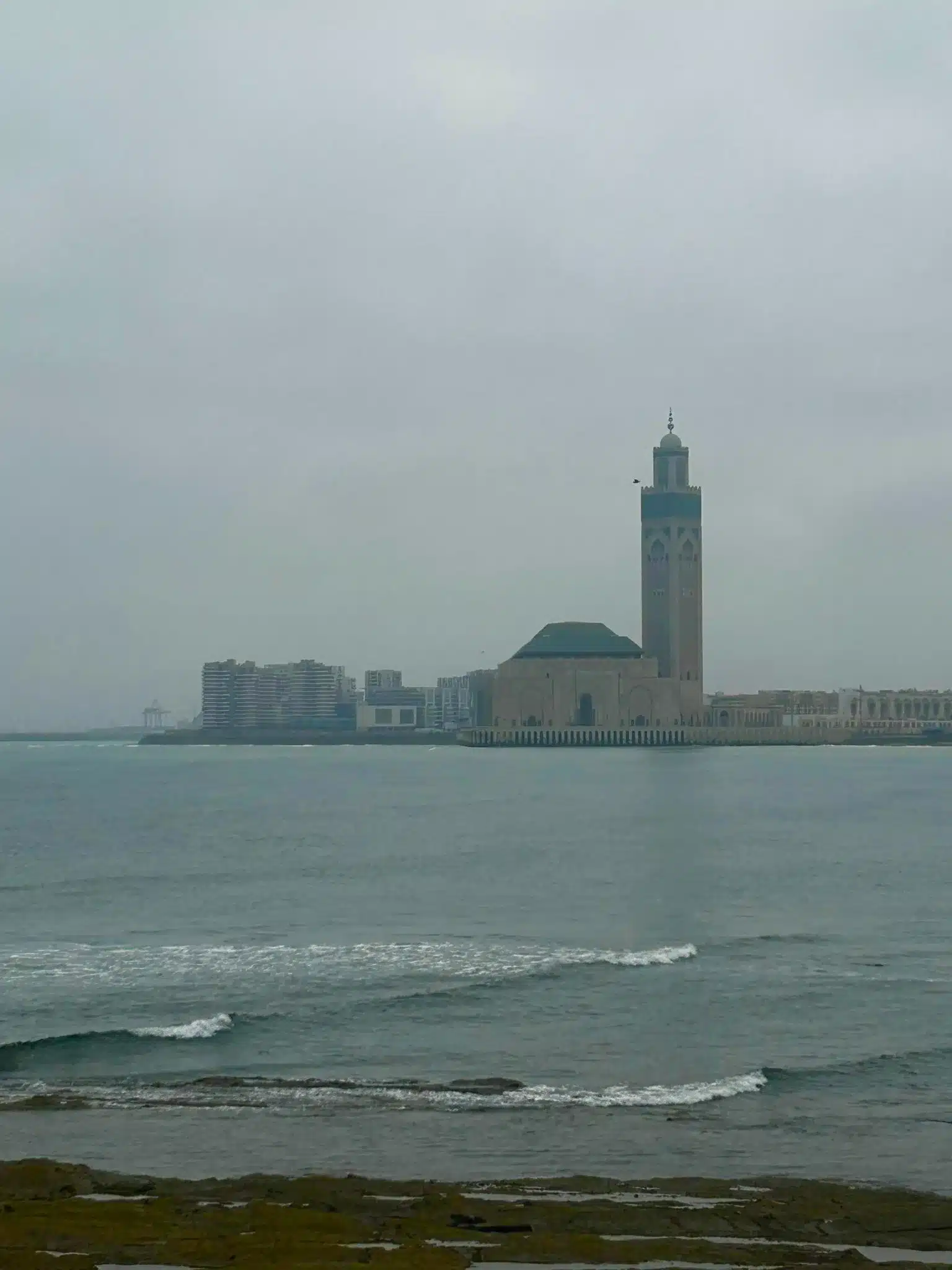
Final Thoughts: How Many Days Are Ideal for Casablanca?
-
2–3 Days: Great for travelers on a short trip who want to see highlights like the Hassan II Mosque, Corniche, Old Medina, and a taste of the city’s food scene.
-
4–5 Days: Perfect for a balanced experience of Casablanca’s architecture, cultural diversity, and nearby excursions to Mohammedia or El Jadida.
-
6–7 Days: Ideal for travelers who want a deep dive into Casablanca’s history, art, neighborhoods, and hidden gems while also enjoying day trips and leisure time.
